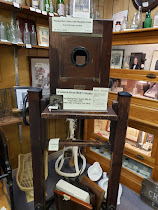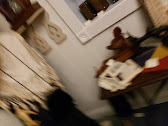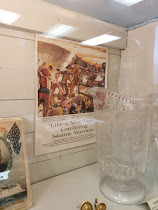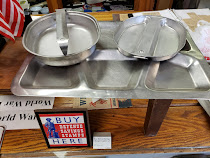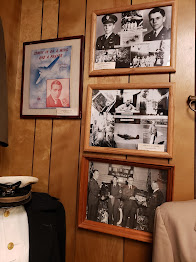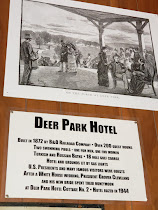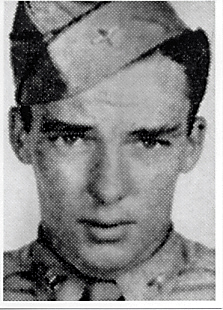
Palli Thordarson, a chemistry professor at the University of New South Wales, explains why soap is so effective against the Wuhan Coronavirus.
Source
Please read his entire thread below.
Here is his
Twitter feed from which I abstracted his knowledge.
We are told every day to wash our hands to prevent the spread of the Wuhan Coronavirus or any flu. We are never told why. Here is why.

My deep gratitude to Professor Thordarson for explaining why we need to wash our hands religiously to get past this current pandemic flu.
The Spanish Flu lasted 13 weeks in 1918. We'll see how long this one lasts.
1/25 Part 1 - Why
does soap work so well on the SARS-CoV-2, the coronavirus and indeed most
viruses? Because it is a self-assembled nanoparticle in which the weakest link
is the lipid (fatty) bilayer. A two part thread about soap, viruses and
supramolecular chemistry #COVID19
2/25 The soap
dissolves the fat membrane and the virus falls apart like a house of cards and
"dies", or rather, we should say it becomes inactive as viruses
aren’t really alive. Viruses can be active outside the body for hours, even
days.
3/25 Disinfectants,
or liquids, wipes, gels and creams containing alcohol (and soap) have a similar
effects but are not really quite as good as normal soap. Apart from the alcohol
and soap, the “antibacterial agents” in these products don't affect the virus
structure much at all.
4/25 Consequently,
many antibacterial products are basically just an expensive version of soap in
terms of how they act on viruses. Soap is the best but alcohol wipes are good
when soap is not practical or handy (e.g. office receptions).
5/25 But why exactly
is soap so good? To explain that, I will take you through a bit of a journey
through supramolecular #chemistry,
nanoscience and virology. I try to explain this in generic terms as much as
possible, which means leaving some specialist chemistry terms out.
6/25 I point out to
that while I am expert in supramolecular chemistry and the assembly of
nanoparticles, I am not a virologists. The image with the first tweet is from
an excellent post here which is dense with good virology info:
7/25 I have always
been fascinated by viruses as I see them as one of them most spectacular
examples of how supramolecular chemistry and nanoscience can converge. Most viruses
consist of three key building blocks: RNA, proteins and lipids.
8/25 The RNA is the
viral genetic material -it is very similar to DNA. The proteins have several
roles including breaking into the target cell, assist with virus replication
and basically to be a key building block (like a brick in a house) in the whole
virus structure.
 9/25 The lipids then
form a coat around the virus, both for protection and to assist with its spread
and cellular invasion. The RNA, proteins and lipids self-assemble to form the
virus. Critically, there are no strong “covalent” bonds holding these units
together.
9/25 The lipids then
form a coat around the virus, both for protection and to assist with its spread
and cellular invasion. The RNA, proteins and lipids self-assemble to form the
virus. Critically, there are no strong “covalent” bonds holding these units
together.
10/25 Instead the
viral self-assembly is based on weak “non-covalent” interactions between the
proteins, RNA and lipids. Together these act together like a Velcro so it is
very hard to break up the self-assembled viral particle. Still, we can do it
(e.g. with soap!).
11/25 Most viruses,
including the coronavirus, are between 50-200 nanometers – so they are truly
nanoparticles. Nanoparticles have complex interactions with surfaces they are
on. Same with viruses. Skin, steel, timber, fabric, paint and porcelain are
very different surfaces.
12/25 When a virus
invades a cell, the RNA “hijacks” the cellular machinery like a computer virus
(!) and forces the cell to start to makes a lot of fresh copies of its own RNA
and the various proteins that make up the virus.
13/25 These new RNA
and protein molecules, self-assemble with lipids (usually readily present in
the cell) to form new copies of the virus. That is, the virus does not
photocopy itself, it makes copies of the building blocks which then
self-assemble into new viruses!
14/25 All those new
viruses eventually overwhelm the cell and it dies/explodes releasing viruses
which then go on to infect more cells. In the lungs, some of these viruses end
up in the airways and the mucous membranes surrounding these.
15/25 When you
cough, or especially when you sneeze, tiny droplets from the airways can fly up
to 10 meters (30 ft)! The larger ones are thought to be main coronavirus
carriers and they can go at least 2 m (7 ft). Thus – cover your coughs &
sneezes people!
16/25 These tiny
droplets end on surfaces and often dry out quickly. But the viruses are still
active! What happens next is all about supramolecular chemistry and how
self-assembled nanoparticles (like the viruses) interact with their
environment!
17/25 Now it is time
to introduce a powerful supramolecular chemistry concept that effectively says:
similar molecules appear to interact more strongly with each other than
dissimilar ones. Wood, fabric and not to mention skin interact fairly strongly
with viruses.
18/25 Contrast this
with steel, porcelain and at least some plastics, e.g. teflon. The surface
structure also matter – the flatter the surface the less the virus will “stick”
to the surface. Rougher surfaces can actually pull the virus apart.
19/25 So why are
surfaces different? The virus is held together by a combination of hydrogen
bonds (like those in water) and what we call hydrophilic or “fat-like”
interactions. The surface of fibres or wood for instance can form a lot of
hydrogen bonds with the virus.
20/25 In contrast
steel, porcelain or teflon do not form a lot of hydrogen bond with the virus.
So the virus is not strongly bound to these surfaces. The virus is quite stable
on these surface whereas it doesn’t stay active for as long on say fabric or
wood.
21/25 For how long
does the virus stay active? It depends. The SARS-CoV-2 coronavirus is thought
to stay active on favourable surfaces for hours, possibly a day. Moisture
(“dissolves”), sun light (UV light) and heat (molecular motions) all make the
virus less stable.
22/25 The skin is an
ideal surface for a virus! It is “organic” and the proteins and fatty acids in
the dead cells on the surface interact with the virus through both hydrogen
bonds and the “fat-like” hydrophilic interactions.
23/25 So when you
touch say a steel surface with a virus particle on it, it will stick to your
skin and hence get transferred onto your hands. But you are not (yet) infected.
If you touch your face though, the virus can get transferred from your hands and
on to your face.
24/25 And now the
virus is dangerously close to the airways and the mucus type membranes in and
around your mouth and eyes. So the virus can get in…and voila! You are infected
(that is, unless your immune system kills the virus).
25/25 If the virus
is on your hands you can pass it on by shaking someone’s else hand. Kisses,
well, that's pretty obvious…It comes without saying that if someone sneezes
right in your face you are kind of stuffed. Part 2 about soap coming next (25
post limit reached)!
26/39 Part 2 about
soap, supramolecular chemistry and viruses. So how often do you touch your
face? It turns out most people touch the face once every 2-5 minutes! Yeah, so
you at high risk once the virus gets on your hands unless you can wash the active
virus off.
27/39 So let’s try
washing it off with plain water. It might just work. But water “only” competes
with the strong “glue-like” interactions between the skin and virus via
hydrogen bonds. They virus is quite sticky and may not budge. Water isn’t
enough.
28/39 Soapy water is
totally different. Soap contains fat-like substances knowns as amphiphiles,
some structurally very similar to the lipids in the virus membrane. The soap
molecules “compete” with the lipids in the virus membrane.
29/39 The soap
molecules also compete with a lot other non-covalent bonds that help the
proteins, RNA and the lipids to stick together. The soap is effectively
“dissolving” the glue that holds the virus together. Add to that all the
water.
30/39 The soap also
outcompetes the interactions between the virus and the skin surface. Soon the
viruses get detached and fall a part like a house of cards due to the combined
action of the soap and water. The virus is gone!
31/39 The skin is
quite rough and wrinkly which is why you do need a fair amount of rubbing and
soaking to ensure the soap reaches very crook and nanny on the skin surface
that could be hiding active viruses.
32/39 Alcohol based
products, which pretty includes all “disinfectants” and “antibacterial”
products contain a high-% alcohol solution, typically 60-80% ethanol, sometimes
with a bit of isopropanol as well and then water + a bit of a soap.
33/39 Ethanol and
other alcohols do not only readily form hydrogen bonds with the virus material
but as a solvent, are more lipophilic than water. Hence alcohol do also
dissolve the lipid membrane and disrupt other supramolecular interactions in
the virus.
34/39 However, you
need a fairly high concentration (maybe +60%) of the alcohol to get a rapid
dissolution of the virus. Vodka or whiskey (usually 40% ethanol), will not
dissolve the virus as quickly. Overall alcohol is not quite as good as soap at
this task.
35/39 Nearly all
antibacterial products contain alcohol and some soap and this does help killing
viruses. But some also include “active” bacterial killing agents, like
triclosan. Those, however, do basically nothing to the virus!
36/39 To sum up,
viruses are almost like little grease-nanoparticles. They can stay active for
many hours on surfaces and then get picked up by touch. They then get to our
face and infect us because most of us touch the face quite frequently.
37/39 Water is not
very effective alone in washing the virus off our hands. Alcohol based product
work better. But nothing beats soap – the virus detaches from the skin and
falls apart very readily in soapy water.
38/39 Here you have
it – supramolecular chemistry and nanoscience tell us not only a lot about how
the virus self-assembled into a functional active menace, but also how we can
beat viruses with something as simple as soap.
39/39 Thank you for
reading my first thread. Apologies for any mistakes in the above. I might have
some virology details wrong here as I am not a virologist unlike @MackayIM who
I am a big fan of! But I hope this inspires you not only to use soap but to
read up on chemistry!
@thereadreaderapp
unroll
Wow! That took of quickly.
Thanks! I should mention that this thread is based on a Facebook post I did in
Icelandic yesterday. That one took off too with +1K shares already but Iceland
had a very rapid rise in COVID-19 cases the past week or so.
Enjoying this thread?
Stay in touch and get notified when new unrolls are available
from this author!
This Thread may be Removed Anytime!
Twitter may remove this content at anytime, convert it
as a PDF, save and print for later use!
Save
this thread as PDF
Try unrolling a thread
yourself!
2) Go to a Twitter thread (series of Tweets by the
same owner) and mention us with a keyword "unroll"@threadreaderapp
unroll
Related hashtags
a day ago
1/9 It
looks like my "soap" tweet has been quoted all over the place.
Wonderful! I do though take a slight issue with the tone in some of these when
it comes to soap vs hand sanitiser. Just because I said, soap is better,
doesn't mean sanitiser are not good-they are very good!
2/9 Let's
recap: Soap dissolves the virus by breaking up the interactions that hold it
together. The alcohol in sanitisers and wipes does pretty much the same:
"Hence alcohol does also dissolve the lipid membrane and disrupts other
supramolecular interactions in the virus"
3/9 There
is a subtle point here that I didn't explain. Alcohol is a solvent. It is
different from water or say petrol. Now, non-covalent interactions are very
solvent dependent. The "hydrophobic" interactions that hold the virus
together are strongest in water (water = hydro).
Mar 9th 2020
1/18
A soap is a soap is a soap! I am still flabbergasted by your response to my
Twitter thread about the #COVID19 Coronavirus,
soap and supramolecular chemistry! I have been quite busy today but I in this
thread I will try to provide answers to some of your questions:
2/18
A lot of the questions are basically about which soap is best? Some people ask
if detergents are better/worse than soap? Let me start with the latter one.
Basically, what people call a detergent and what is a soap seems to differ! To
me as a chemists they are very
similar.
3/18
The Wikipedia entry on detergents seems to delineate detergents from soap
mainly by calling alkylbenzenesulfonates & similar chemicals detergents,
whereas fatty acid salts are soaps. You find detergents mainly in things like
laundry detergents. See en.wikipedia.org/wiki/Detergent

















